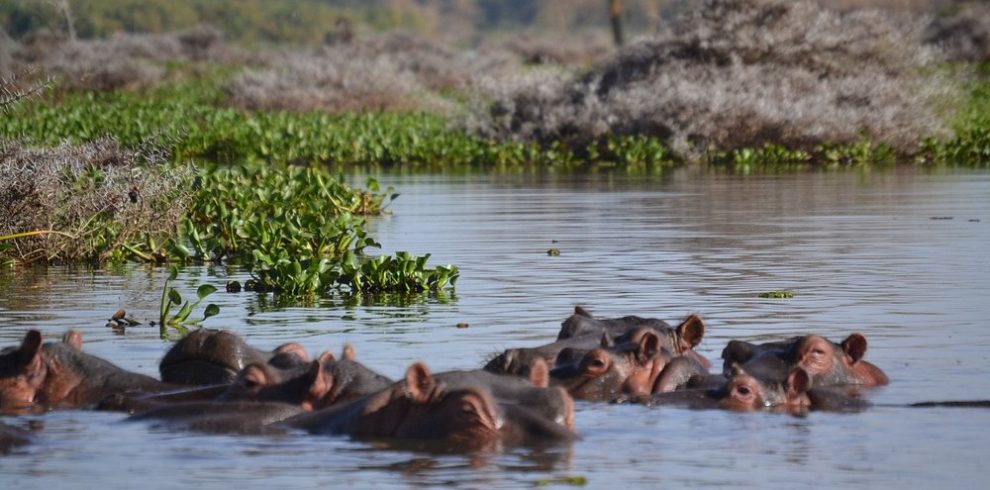
The Kalahari Desert is one of the most fascinating and expansive deserts in the world. The Kalahari is situated in Southern Africa and spreads across neighboring countries including Namibia, Botswana and South Africa. It is a sandy savanna of semi-arid nature that covers an area of over 900,000 square kilometers and has various forms of unique wildlife and cultural heritage as well as rich ecosystems. Despite being one of the driest places on Earth, the Kalahari Desert offers an intriguing paradox of life and survival, and it is a symbol of both harshness and beauty in the African landscape.
In this article, we will delve into 10 interesting Kalahari Desert facts, providing an in-depth exploration of this majestic desert, from its unique climate and landscapes to the people and wildlife that call it home. You can be a curious traveler or a nature enthusiast, or someone interested in deserts, and these facts will ignite your interest and give something new about one of the most well-known regions of Africa.
1. The Kalahari Is Not a True Desert

While many people associate the Kalahari Desert with the harsh, dry conditions typically associated with deserts, it is technically not a true desert. The real deserts are those that get less than 250 millimeters of rain per year. However, the Kalahari Desert is considered a semi-arid sandy savanna, as it receives more rainfall than a typical desert – averaging between 150 to 650 millimeters of rain per year, depending on the region. This rain sustains a robust vegetation and wildlife population which makes the Kalahari more grassed than a barren desert.
2. The Kalahari Desert Covers a Vast Area

Spanning across three countries—Botswana, Namibia, and South Africa—the Kalahari Desert is one of the largest deserts in the world. It occupies an area of approximately 900,000 square kilometers (350,000 square miles). To give a sense of that scale, the Kalahari is bigger than most countries; it is roughly the size of Turkey or France. It is viewed as the second-largest desert in the world, preceded only by the Sahara, which is an actual desert in the meaning of rainfall.
This large swathe of land is dominated by the differing landscapes of sand dunes, salt pans, dry stream beds, and scrub bushes. Although the terrain may be seen to be barren, it is a mountainous region that hosts a vast amount of flora and fauna.
3. The Kalahari Is Home to Unique Wildlife
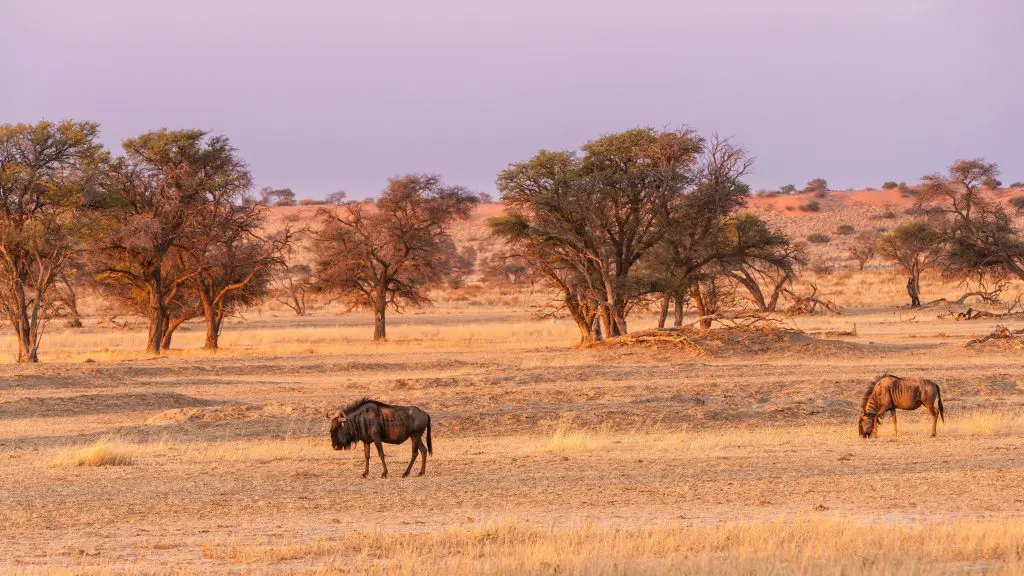
One of the most surprising interesting Kalahari Desert facts is the remarkable variety of wildlife that survives in this harsh environment. In spite of the desert-like conditions, the Kalahari has an impressive diversity of wildlife with many creatures adapted to the hot and dry climate. Some of the most iconic animals that are found in the Kalahari include:
• The Kalahari Lion: Known for its larger-than-average size, the Kalahari lion is famous for its thick, dark mane and its ability to thrive in the desert. These lions have become used to the hunting in the extreme conditions of the desert, when there is little prey.
• Meerkats: These small, social animals live in groups and are well-known for their upright posture as they scan the surroundings for predators. Meerkats are perfectly suited for the Kalahari environment, where they live in burrows to escape the heat.
• Springbok: This graceful antelope species is well-known for its leaping behavior, known as “pronking.” Springboks are one of the most iconic animals of the Kalahari Desert and are commonly seen in large herds across the savanna.
• Suricate (also known as the “Kalahari meerkat”): These fascinating creatures form highly organized groups where every member has a specific role, from foraging to standing guard. This unity of action is critical in survival following the harsh conditions of the desert.
Despite its arid environment, the Kalahari Desert is teeming with a surprising array of life, demonstrating how species can adapt and thrive in extreme conditions.
4. The Kalahari Is the Largest Salt Pan in the World
One of the most unique features of the Kalahari Desert is the vast, barren Makgadikgadi Salt Pans. This is an ancient, dry salt lake bed, which is among the largest salt pans in the world covering an area estimated at 12,000 square kilometers. The salt pans are reminders of a huge inland lake that existed many centuries ago in big parts of the Kalahari region before the desert became what it is today.
The salt pans themselves are strikingly beautiful and can be a bit creepy with their seemingly endless wide open expanses of a blinding white salt surface. The rain, when falls, causes these salt pans to send into an oasis, temporarily turning green, and attracting thousands of migratory birds, including flamingos, which come to breed in the temporarily flooded environment.
5. The Kalahari Hosts One of the Most Amazing Animal Migrations

While the Kalahari Desert might seem too harsh to support large migrations, the region is home to one of Africa’s lesser-known but incredibly fascinating migrations. Every year, during the rainy season, vast herds of antelope—including the springbok and wildebeest—migrate through the Kalahari in search of water and fresh grazing. It is mainly the rain patterns that move them, and when the rains do fall during the rainy season, they transform the desert into a green paradise.
Rains come seasonally, bringing a mass speculation of vegetation and which in turn attracts huge numbers of herbivores. The migrating herds are followed by predators like lions and cheetahs resulting in dramatic wildlife spectacles where the survival of the fittest takes place. This is when the Kalahari truly awakens and the experience is one of the best when it comes to wildlife lovers.
6. The Kalahari Is Home to the San People

The San people—also known as the Bushmen—have lived in the Kalahari Desert for thousands of years. They have one of the oldest continuous cultures in the world and their understanding of the desert and its ecosystem has enabled them to survive within what is considered one of the harshest environments of the planet. San are famous hunters and gatherers. They possess a complex knowledge of the wildlife, plants and conditions of the desert. Their classical approaches to survival which involve the tracking of animals, using natural resources as sources of food, water, and shelter have also made them one of the strongest groups in the history of humankind. Presently, there are still many San populations residing in the Kalahari, who remain cultured in their cultural practices and modernity.
7. The Kalahari Desert Hosts the World’s Largest Mammal Migration
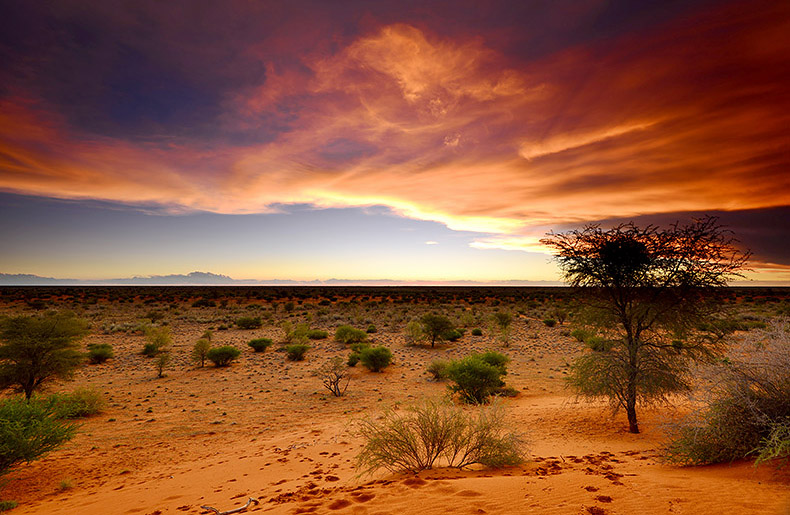
Although the Kalahari is typically related to its dry, arid surface, it is also the site of one of the most amazing natural sights located in the world- seas of migrating mammals. Every year, thousands of wildebeest, springbok, and zebras migrate across the desert in search of food and water. The migration is biggest in the wet season when the desert turns into a more habitable area and the animal populations are more concentrated.
This migration can result in some of the dramatic predator prey scenes as cheetahs, lions, and wild dogs hunting the migrating herds. The migration experience is an opportunity to encounter the most raw and fascinating survival landscapes, an opportunity which many will never get.
8. The Kalahari Has an Ancient Underground Water System

One of the most remarkable features of the Kalahari Desert is its underground water system. The dry and cracked earth conceals vast underground rivers and aquifers that make up the desert. The existence of these concealed reservoirs of water is vital to both the wildlife and people living in the area. In certain parts of the Kalahari, it is believed that the fossil water lying below its surface dates back thousands of years and is important in maintaining life throughout the dry months. The presence of these underground water reserves is one of the key reasons that the Kalahari Desert can support such a wide variety of life, despite its harsh surface conditions.
9. The Kalahari Desert Has a Unique Climate
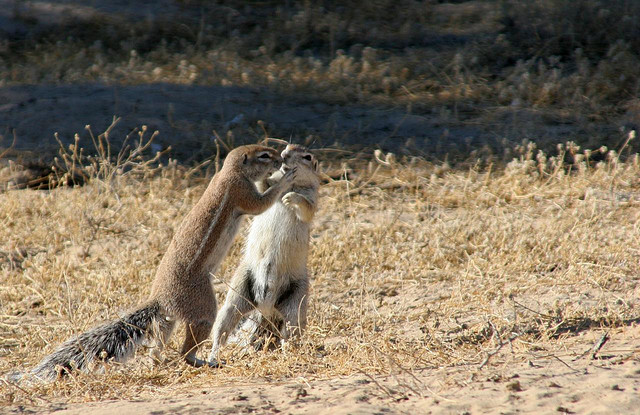
The Kalahari Desert experiences a unique climate compared to many other deserts around the world. It is mainly dry but with high seasonal variation and hot summers along with cooler winters. It can get extremely hot between November and March with temperatures hitting over 40C (104F ) and you may find the heat quite oppressive, but in winter, during the months of May to September, you will feel quite cool, cold at night even by default.
Interestingly, during the summer months the desert can be subjected to short intense rainfalls that result in drastic alterations across the landscape. These rains turn the desert into a land of greenery, which explains why it becomes a great site of wildlife viewing and migrations.
10. The Kalahari Desert Is Famous for Its Stunning Sand Dunes
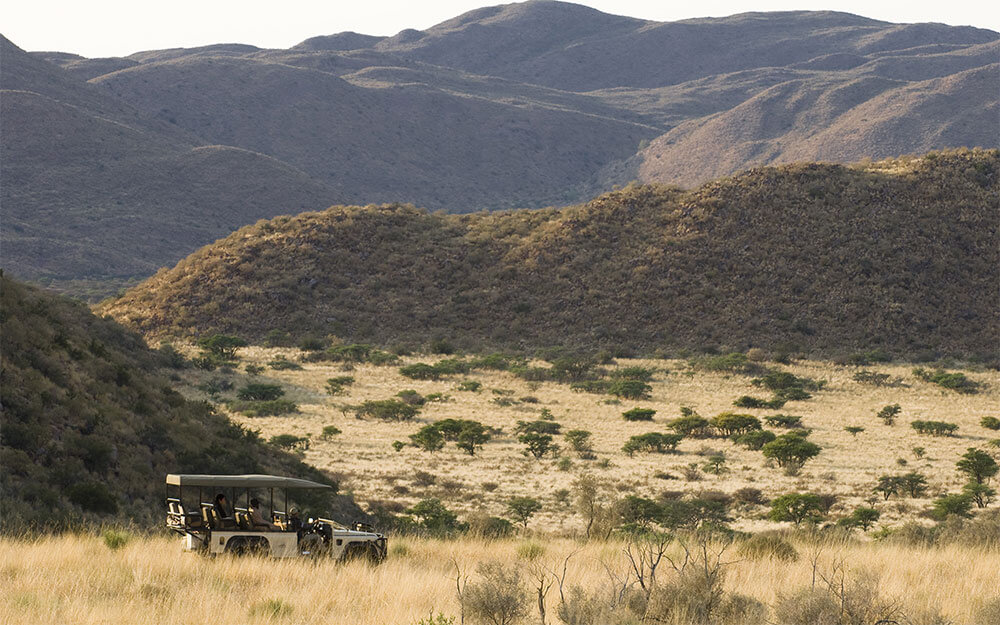
One of the most iconic features of the Kalahari Desert is its sand dunes, which are often smaller than those of the Sahara but still visually striking. These dunes are as high as 30 meters (98 ft) and are frequently painted in shades of red, orange and golden, especially at sunset and sunrise. The movement of the dunes form a beautiful landscape that is ever changing and as a result, the dunes are popular landscape to photographers and lovers of nature.
The dunes are not only beautiful- they are also a significant environmental aspect. The dunes contribute to the moisture retention of the soil process which aids in the existence of wetness within the desert environment.
Conclusion: The Kalahari Desert’s Hidden Wonders
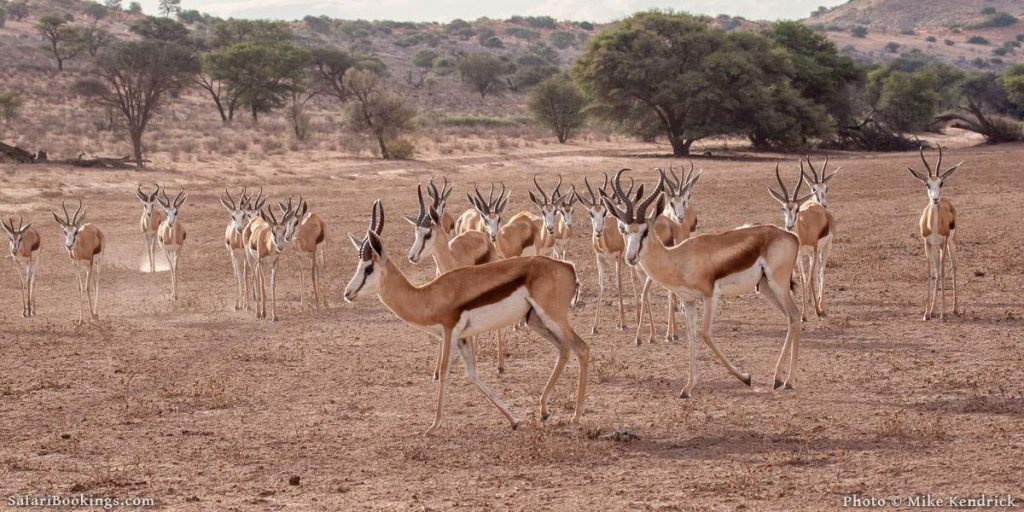
The Kalahari Desert is far more than just a barren, arid land. It is dynamic and a vibrant region that is full of fascinating wildlife, ancient cultures and natural wonders. The water systems that run underground, the migration patterns of animals every season, the history of the San people and the sand dunes are just a few of the secrets that Kalahari has to reveal. These 10 interesting Kalahari Desert facts reveal the complex and diverse ecosystem of this remarkable region. It is a land where even the struggle to live is a test of adaptation and at the same time a place of beauty, strength and hidden life. Whether you are planning a trip to this vast desert or simply have a passion for learning about the natural world, the Kalahari Desert should be celebrated for its unique place in the history and ecology of Africa.



